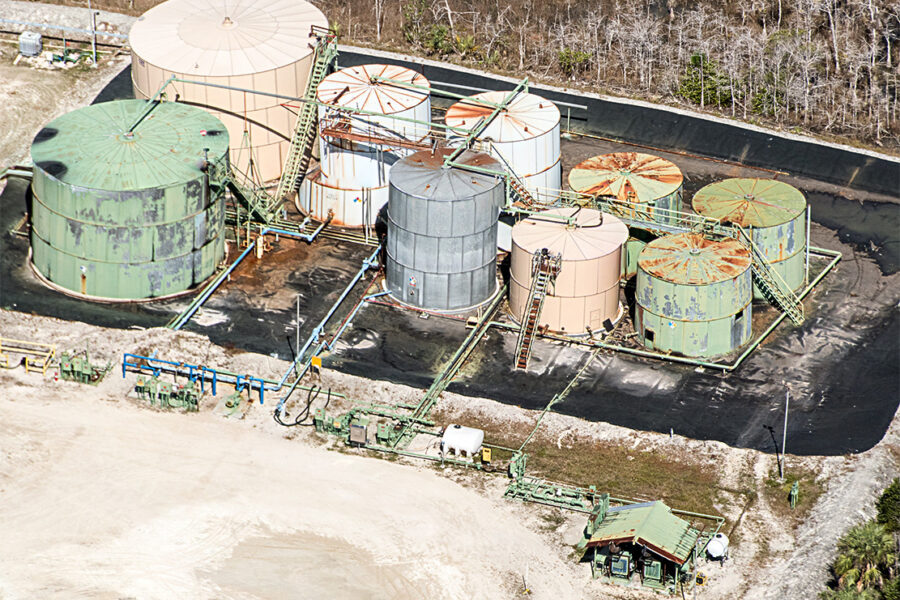The nation’s first survey of fracking well depths shows shallow fracking is more widespread than previously thought, occurring at 16 percent of publicly recorded sites in 27 states, posing a potential threat to underground sources of drinking water.
Stanford University scientist Robert Jackson and his colleagues reviewed about 44,000 wells and found that nearly 7,000 of the sites were fracked less than a mile below the surface, according to research published this week in the journal Environmental Science & Technology.
“You’ll hear from industry all the time that fracking only occurs a mile or two underground…it’s something that they push really hard,” said Mark Williams, a University of Colorado geography professor who was not involved with the study.
That’s because as concern has grown about fracking’s potential threat to well water in recent years, industry has sought to reassure the public by saying that fracking occurs at depths far below the water table. Consequently, migration of fracking fluid or methane from a frack zone more than a mile underground (deeper than 5,000 feet) to a shallow aquifer (around 1,000 feet) would be nearly impossible, industry contends.
While most fracking is occurring at those depths, said Williams, this paper reveals a “surprising” number of shallow wells “and that’s a concern.”
“Rob Jackson’s study is really the first study to shed light on shallow wells” and their associated risk to groundwater, said Zacariah Hildenbrand, a visiting scholar at the University of Texas at Arlington. He’s also the founder of the environmental consulting firm Inform Environmental, LLC.
Using well data from the website FracFocus spanning 2008-13, the researchers found well depths ranged nationwide from deeper than 3 miles to as shallow as 100 feet. Of the 27 states reviewed, 12 had recorded at least 50 shallow wells, defined as those drilled less than a mile deep. The three top states for shallow wells include Texas with 2,872 wells, Arkansas with 1,224 and California with 804.
Jackson told InsideClimate News the analysis “definitely” underestimates the practice because of limited reporting to FracFocus, an industry-backed database where companies post drilling information. For most states, company reporting to the online registry is voluntary.
Not all shallow wells pose the same threat to groundwater. The “riskiest” fracked wells are both shallow and use high levels of water—1 million gallons or more, said Jackson. Studies have shown that when these high-pressure wells fracture the bedrock, the cracks can extend as much as 2,000 feet upward. This provides an opportunity for the chemical-laced water used in fracking to migrate to the shallower depths of the water table. And the smaller the gap between drilling and surface water, the greater the chance of interaction, said Jackson.
The researchers identified about 2,000 of these shallow, high-volume fracking wells nationwide. “The state that sticks out is Arkansas,” said Jackson. Arkansas has 1,215 of these wells, representing about 99 percent of the state’s publicly reported shallow wells. Kansas, Oklahoma, Pennsylvania and Texas also have this type of shallow well—but to a lesser extent.
Earlier this year a highly anticipated study on the issue conducted by the Environmental Protection Agency briefly mentioned pockets of shallow fracking operations such as those in the New Albany Shale formation that stretches across Illinois, Indiana and Kentucky––as well as in Michigan’s Antrim Shale formation. These four states weren’t accurately represented in Jackson’s study because few companies operating there have reported drilling information to FracFocus.
The EPA investigation’s main––and most controversial––finding was the discovery of select cases of fracking-related water contamination and the agency’s conclusion that this isn’t a widespread problem.
Jackson and his team did not look at whether shallow fracking is contaminating groundwater. However, they identified previous studies highlighting examples of where fracking had occurred within the same zone as known aquifers. A 2014 report by the California Council on Science and Technology documented hundreds of shallow wells that were fracked into underground sources of drinking water. Meanwhile, research in Pavillion, Wyo., revealed wells with shallow depths between 699 and 1,060 feet in an area where the water wells extended down to at least 750 feet.
The fact that fracking is happening at the same depths of known drinking water sources “is very, very scary,” said Hildenbrand.
Additionally, Jackson’s study reviewed state regulations current through 2014 across the U.S. and found that in most cases, including Arkansas, California and Wyoming, regulators required no extra safeguards for shallow fracking operations.
California has updated its groundwater monitoring rules since then. While these new regulations still don’t target shallow wells specifically, they are more comprehensive, said Jackson.
Larry Bengal, director of the Arkansas Oil and Gas Commission, wrote InsideClimate News in an email: “Arkansas has sufficient regulations protective of groundwater during hydraulic fracturing operations.”
Even the two states identified with extra rules—Colorado and Texas—could be more protective, said Jackson. In Texas, operators have to use a different type of casing on wells, and that casing must undergo extra testing. In Colorado, operators are required to conduct extra environmental and engineering assessments, and possibly limit well stimulation.
This study addresses that issue head-on with “common-sense” recommendations, said Hildenbrand. For example, the authors suggest that states require companies to do pre- and post-water monitoring at water wells surrounding shallow drilling; they also call for those same operators to disclose all the chemicals they use during fracking operations.











